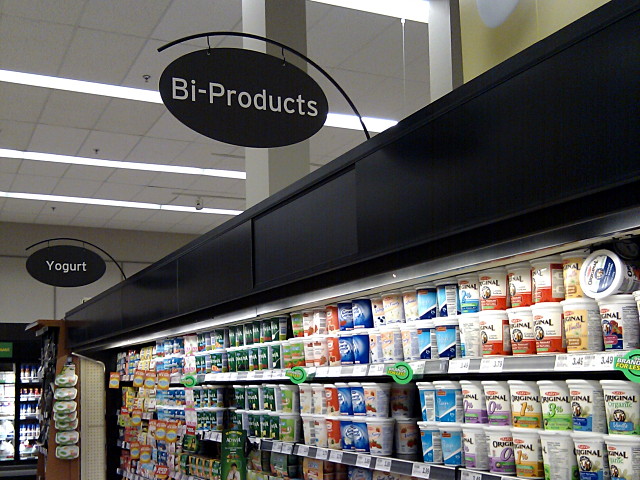Not content to let sleeping yogs bi, I decided to ask Metro if the “bi-products” label meant something other than what it seemed to. The emailed response from customer care came in this morning:
The Merchandising Team informs me of the following:
“Bi-products” would indicate Milk Bi-products which both Yogurt and Cottage cheese are. Some stores may have yogurt or Cottage cheese or Sour Cream or all. The layout of the counter in every store is unique based on counter size, set size and of course our customers’ needs.
So there you have it. Misspelled or otherwise, there’s nothing more to the sign than “milk leftovers.” Now I have to visit the meat department to see how they label the ground beef and sausages.
